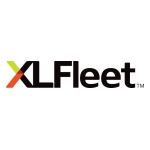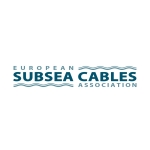– Revenue of $524.3 Million for the Fourth Quarter; $1.9 Billion for the Full Year
– Revenue Growth of 7% and 2% over Prior Year for Fourth Quarter and Full Year, Respectively
– GAAP Diluted Earnings Per Share (“EPS”) of $0.57 for the Fourth Quarter; $1.60 for the Full Year
– Adjusted Diluted EPS of $0.78 for the Fourth Quarter; $2.48 for the Full Year
ARLINGTON, Va.--(BUSINESS WIRE)--FLIR Systems, Inc. (NASDAQ: FLIR) (“FLIR” or the “Company”), a world leader in the design, manufacture, and marketing of intelligent sensing technologies, today announced financial results for the fourth quarter and full year ended December 31, 2020.

Commenting on FLIR’s fourth quarter and full year results, Jim Cannon, President and Chief Executive Officer, said, “FLIR ended 2020 on a strong note with fourth quarter revenue growth of 7% compared to the prior year quarter. Over the course of the year, we continued to execute on our strategy, delivering new program wins, releasing new, innovative products for our customers, and realizing cost savings from Project Be Ready. I am very proud of our team’s performance. Their dedication and hard work ensured the pandemic did not have a material impact on our consolidated financial performance, and most importantly, allowed us to meet the needs of our customers throughout this challenging year.”
Mr. Cannon added, “We are entering 2021 with strong momentum, and are confident that our combination with Teledyne will create an even stronger organization. The joining of our companies will provide a broader springboard for growth and innovation to meet the evolving needs of our industrial and defense customers, drive enhanced stockholder value and create new opportunities for our employees.”
Fourth Quarter Summary Results
Revenues for the quarter were $524.3 million, compared to $489.0 million in the prior year quarter. Bookings totaled $424.2 million in the quarter, representing a book-to-bill ratio of 0.81. Backlog at the end of the quarter was $809.7 million, reflecting a 0.3% increase relative to the prior year quarter.
GAAP Earnings Results
Gross profit for the quarter was $246.5 million, compared to $232.4 million in the prior year quarter. Gross margin decreased to 47.0% from 47.5% in the prior year quarter, primarily attributable to product mix in the Defense Technologies segment. Earnings from operations for the quarter were $102.4 million, compared to $54.1 million in the prior year quarter. Operating margin increased to 19.5% from 11.1% in the prior year quarter, primarily due to the aforementioned higher revenue and associated gross profit, decreases in restructuring expenses and related asset impairment charges, lower consent agreement costs, operating expense reductions from Project Be Ready, and decreases in marketing and travel costs. Diluted EPS was $0.57, compared to $0.01 in the prior year quarter.
The weighted average diluted share count for the quarter was 132 million, down from 136 million in the prior year quarter primarily due to stock repurchase activity in the first quarter of 2020.
Non-GAAP Earnings Results
Adjusted gross profit for the quarter was $256.2 million, compared to $248.8 million in the prior year quarter. Adjusted gross margin decreased to 48.9% from 50.9% in the prior year quarter, primarily attributable to product mix in the Defense Technologies segment. Adjusted operating income for the quarter was $122.5 million, compared to $101.7 million in the prior year quarter. Adjusted operating margin increased to 23.4% from 20.8% in the prior year quarter, primarily due to the aforementioned higher revenue and associated gross profit, operating expense reductions from Project Be Ready, and decreases in marketing and travel costs. Adjusted diluted EPS was $0.78, compared to $0.53 in the prior year quarter.
Fourth Quarter Segment Results
Industrial Technologies Segment
Industrial Technologies revenues for the quarter were $298.3 million, representing an increase of $20.0 million, or 7.2% compared to the prior year quarter. The increase was primarily attributable to heightened demand for EST solutions due to the COVID-19 pandemic and an increase in maritime product sales, partially offset by lower volume in certain commercial end markets such as security products.
Industrial Technologies segment operating income was $85.2 million, compared to $71.8 million in the prior year quarter. Segment operating margin increased to 28.6% from 25.8% in the prior year quarter, primarily attributable to the aforementioned higher revenue and associated gross profit, operating expense reductions from Project Be Ready, and decreases in marketing and travel costs.
Industrial Technologies bookings totaled $235.4 million for the quarter, representing a book-to-bill ratio of 0.79, and was impacted by the timing of awards and related shipments. Backlog at the end of the quarter was $284.8 million, reflecting a 6.0% increase relative to the prior year quarter, primarily due to long term order award timing and an increased volume of maritime orders during the fourth quarter.
Defense Technologies Segment
Defense Technologies revenues for the quarter of $226.0 million increased by $15.3 million, or 7.2% compared to the prior year quarter. The revenue increase was primarily attributable to improved volumes for unmanned systems.
Defense Technologies segment operating income was $55.3 million, compared to $50.1 million in the prior year quarter. Segment operating margin increased to 24.5% from 23.8% in the prior year quarter, primarily attributable to decreases in marketing and travel costs, partially offset by lower gross margins due to product mix.
Defense Technologies bookings totaled $188.8 million for the quarter, representing a book-to-bill ratio of 0.84, and was impacted by the timing of awards and related shipments. Backlog at the end of the quarter was $524.8 million, reflecting a 2.5% decrease relative to the prior year quarter, primarily due to order volume and subsequent deployment timing, partially offset by increased demand for unmanned systems.
Full Year Summary Results
Revenues for the full year were $1,924 million, compared to $1,877 million in the prior year. Bookings totaled $1,924 million for the full year, representing a book-to-bill ratio of 1.00.
GAAP Earnings Results
Gross profit for the full year was $947.0 million, compared to $929.4 million in the prior year. Gross margin was 49.2%, consistent with the prior year. Operating margin increased to 16.5% from 14.5% in the prior year, primarily due to the aforementioned higher revenue and associated gross profit, operating expense reductions from Project Be Ready, decreases in marketing and travel costs, lower intangible asset amortization, and a decrease in separation, transaction, and integration costs. The favorable impacts were partially offset by an increase in restructuring expenses and related asset impairment charges. Diluted EPS was $1.60, compared to $1.26 in the prior year.
The weighted average diluted share count for the year was 133 million, down from 137 million in the prior year primarily due to stock repurchase activity in the first quarter of 2020.
Non-GAAP Earnings Results
Adjusted gross profit for the year was $986.0 million, compared to $972.5 million in the prior year. Adjusted gross margin decreased to 51.3% from 51.5% in the prior year, primarily due to the ramp up of lower margin programs in the Defense Technologies segment, partially offset by favorable product mix in the Industrial Technologies segment. Adjusted operating income for the year was $428.9 million, compared to $395.7 million in the prior year. Adjusted operating margin increased to 22.3% from 21.0% in the prior year, primarily due to the aforementioned higher revenue and associated gross profit, operating expense reductions from Project Be Ready, and decreases in marketing and travel costs. Adjusted diluted EPS was $2.48, compared to $2.16 in the prior year.
Full Year Segment Results
Industrial Technologies Segment
Industrial Technologies revenues for the year were $1,156 million, representing an increase of $64.0 million, or 5.9% compared to the prior year. The increase was primarily attributable to heightened demand for EST solutions due to the COVID-19 pandemic, partially offset by lower volume in certain commercial end markets such as maritime and security products.
Industrial Technologies segment operating income was $344.4 million, compared to $276.2 million in the prior year. Segment operating margin increased to 29.8% from 25.3% in the prior year, primarily attributable to the aforementioned higher revenue and associated gross profit, favorable product mix, operating expense reductions from Project Be Ready, and decreases in marketing and travel costs.
Industrial Technologies bookings totaled $1,179 million for the year, representing a book-to-bill ratio of 1.02.
Defense Technologies Segment
Defense Technologies revenues for the year of $767.6 million decreased by $27.3 million, or 3.4% compared to the prior year. The revenue decrease was primarily attributable to the completion of certain contracts that contributed to revenue in the prior year, partially offset by increased volumes for unmanned systems.
Defense Technologies segment operating income was $168.5 million, compared to $196.6 million in the prior year. Segment operating margin decreased to 21.9% from 24.7% in the prior year, primarily attributable to the aforementioned lower revenue and associated gross profit and the ramp up of lower margin programs, partially offset by decreases in marketing and travel costs.
Defense Technologies bookings totaled $744.6 million for the year, representing a book-to-bill ratio of 0.97.
Corporate Developments
Altavian Acquisition
On December 2, 2020, the Company acquired 100% of the outstanding stock of Altavian, Inc. ("Altavian"), a privately held manufacturer of small unmanned aerial systems (sUAS) for defense and public safety customers. The transaction consideration of $34.1 million included a cash payment of $26.8 million and shares of the Company’s common stock valued at $7.3 million. In addition to the above transaction consideration, $2.5 million in Company shares will be payable as share-based compensation over a three-year period. The acquisition advances the Company's strategic pillars and expands franchise program opportunities in defense, public safety, and industrial markets.
Teledyne Agreement
On January 4, 2021, we entered into a definitive agreement to be acquired by Teledyne Technologies Incorporated, a manufacturer and supplier of sophisticated instrumentation, digital imaging products and software, aerospace and defense electronics, and engineered systems. The Teledyne transaction will enable the combined company to create a stronger platform for growth and innovation and be even better positioned to meet the evolving needs of our customers, drive stockholder value and create new opportunities for our employees. Together, we will offer a uniquely complementary end-to-end portfolio of sensory technologies for all key domains and applications across a well-balanced, global customer base. In addition, both our business models include serving respective markets and customers with sensors, cameras and sensor systems.
The transaction is expected to close in the middle of 2021 subject to the receipt of required regulatory approvals, including expiration or termination of the applicable waiting period under the Hart-Scott-Rodino Antitrust Improvements Act, approvals of Teledyne and the Company stockholders and other customary closing conditions.
Balance Sheet and Liquidity
FLIR ended the year with $297.8 million in cash and cash equivalents and approximately $595.4 million in borrowing capacity under its credit facility based on current profitability levels and leverage covenants.
COVID-19 Update
As previously announced, FLIR’s businesses have been deemed essential for critical infrastructure under the Cybersecurity and Infrastructure Security Agency exemption, and all of its manufacturing facilities remain operational. FLIR has implemented stringent safety protocols and continues to monitor recommendations and guidelines issued by the Centers for Disease Control, the European Centre for Disease Prevention, and the World Health Organization to ensure the health and safety of its employees.
Given the high degree of uncertainty in the current macroeconomic environment resulting from COVID-19, the Company remains focused on cash optimization activities and disciplined capital allocation.
Shareholder Return Activity
FLIR’s Board of Directors has declared a quarterly cash dividend of $0.17 per share on FLIR common stock payable on March 19, 2021 to shareholders of record as of close of business on March 5, 2021.
About FLIR Systems, Inc.
Founded in 1978, FLIR Systems is a world-leading technology company focused on intelligent sensing solutions for defense and industrial applications. Our vision is to be “The World’s Sixth Sense,” creating technologies to help professionals make faster, better decisions that save lives and livelihoods. For more information, please visit www.flir.com and follow @flir.
Forward-Looking Statements
Statements, estimates or projections in this release may constitute forward-looking statements within the meaning of the Private Securities Litigation Reform Act of 1995. Any statements that are not statements of historical fact (including statements containing the words “believes,” “plans,” “anticipates,” “expects,” “estimates,” or similar expressions) should be considered to be forward looking statements. Such statements are based on current expectations, estimates, and projections about FLIR’s business based, in part, on assumptions made by management. These statements are not guarantees of future performance and involve risks and uncertainties that are difficult to predict. Therefore, actual outcomes and results may differ materially from what is expressed or forecasted in such forward-looking statements due to numerous factors, including the following:
-
risks related to the pending acquisition of FLIR by Teledyne, including parties’ ability to satisfy the conditions required to complete the transaction and, during the pendency of the transaction, diversion of management and employees’ attention, retention and recruiting challenges, uncertainty in business relationships and restrictions on operations set forth in the definitive acquisition agreement;
-
risks related to United States government spending decisions and applicable procurement rules and regulations;
-
negative impacts to operating margins due to reductions in sales or changes in product mix;
-
impairments in the value of tangible and intangible assets;
-
unfavorable results of legal proceedings;
-
risks associated with international sales and business activities, including the regulation of the export and sale of our products worldwide and our ability to obtain and maintain necessary export licenses, as well as the imposition of significant tariffs or other trade barriers;
-
risks to our supply chain, production facilities or other operations, and changes to general, domestic, and foreign economic conditions, due to the COVID-19 pandemic;
-
risks related to subcontractor and supplier performance and financial viability as well as raw material and component availability and pricing;
-
risks related to currency fluctuations;
-
adverse general economic conditions or volatility in our primary markets;
-
our ability to compete effectively and to respond to technological change;
-
risks related to product defects or errors;
-
our ability to protect our intellectual property and proprietary rights
-
cybersecurity and other security threats and technology disruptions
-
our ability to successfully manage acquisitions, investments and divestiture activities and integrate acquired companies;
-
our ability to achieve the intended benefits of our strategic restructuring;
-
risks related to our senior unsecured notes and other indebtedness;
-
our ability to attract and retain key senior management and qualified technical, sales and other personnel;
-
changes in our effective tax rate and the results of pending tax matters; and
-
other risks discussed from time to time in filings and reports filed with the Securities and Exchange Commission.
COVID-19 may exacerbate one or more of the aforementioned and/or other risks, uncertainties and other factors more fully described in the Company’s reports filed with the SEC. In addition, such statements could be affected by general industry and market conditions and growth rates, and general domestic and international economic conditions. Such forward-looking statements speak only as of the date on which they are made and FLIR does not undertake any obligation to update any forward-looking statement to reflect events or circumstances after the date of this release, or for changes made to this document by wire services or internet service providers.
Definitions and Non-GAAP Financial Measures
Bookings are defined as contractual agreements awarded during the reporting period. Backlog is defined as total estimated amount of future revenues to be recognized under negotiated contracts.
We report our financial results in accordance with United States generally accepted accounting principles (“GAAP”). As a supplement to our GAAP financial results, this earnings announcement contains some or all of the following non-GAAP financial measures: (i) adjusted gross profit, (ii) adjusted gross margin (defined as adjusted gross profit divided by revenue), (iii) adjusted operating income, (iv) adjusted operating margin (defined as adjusted operating income divided by revenue), (v) adjusted net earnings, and (vi) adjusted diluted EPS. These non-GAAP measures of financial performance are not prepared in accordance with GAAP and computational methods may differ from those used by other companies. Additionally, these non-GAAP measures should not be considered a substitute for any other performance measure determined in accordance with GAAP, and the Company cautions investors and potential investors to consider these measures in addition to, not as a substitute for, its consolidated financial results as presented in accordance with GAAP. Each of the non-GAAP measures is adjusted from GAAP results as outlined in the "GAAP to Non-GAAP Reconciliation" table included within this earnings release.
In calculating non-GAAP financial measures, we exclude certain items to facilitate a review of the comparability of our core operating performance on a period-to-period basis. Items excluded consist of: (i) separation, transaction, and integration costs, (ii) amortization of acquired intangibles, (iii) restructuring expenses and asset impairment charges, (iv) discrete legal and compliance matters, (v) loss on debt extinguishment, and (vi) discrete tax items. We do not consider these items to be directly related to our core operating performance. Non-GAAP measures are used internally to evaluate the core operating performance of our business, for comparison with forecasts and strategic plans, and as a factor for determining incentive compensation for certain employees. Accordingly, supplementing GAAP financial results with these non-GAAP financial measures enables the comparison of our ongoing operating results in a manner consistent with the metrics reviewed by management. We believe that these non-GAAP measures, when read in conjunction with our GAAP financials, provide useful information to investors by facilitating:
-
the comparability of our ongoing operating results over the periods presented;
-
the ability to identify trends in our underlying business; and
-
the comparison of our operating results against analyst financial models and operating results of other public companies that supplement their GAAP results with non-GAAP financial measures.
The following are explanations of each type of adjustment that we incorporate into non-GAAP financial measures:
-
Separation, transaction, and integration costs – Represents separation, transaction and integration costs related to divestiture and acquisition initiatives.
-
Amortization of acquired intangibles – Represents amortization expense associated with acquired intangible assets.
-
Restructuring expenses and asset impairment charges – Represents employee separation expenses, facility consolidation costs, and certain third party expenses as well as goodwill, intangible asset, and inventory impairment charges associated with Company restructuring activities.
-
Discrete legal and compliance matters – Represents costs incurred associated with certain legal and compliance matters that are not representative of ongoing operational costs. These expenses are primarily attributable to an administrative agreement with the U.S. Department of State (the “Consent Agreement”) to address and remediate certain historical practices associated with U.S. and international trade control laws and regulations. Such costs include a Directorate of Defense Trade Controls penalty, expenses associated with retention of a Special Compliance Officer, and remedial actions required by the terms of the Consent Agreement or otherwise necessary to remedy and achieve full compliance with U.S. and international trade control laws and regulations.
-
Loss on debt extinguishment – Represents the redemption premium and write-off of debt discount and debt issuance costs associated with redemption of the Company’s $425 million unsecured notes due June 15, 2021.
-
Discrete tax items – Represents tax expenses and benefits related to discrete events or transactions that are not representative of the Company’s estimated tax rate related to ongoing operations. These items include charges and reversals of provisions associated with certain unrecognized tax benefits, benefits or charges associated with the windfalls or shortfalls resulting from vesting and exercise activity of share-based compensation, changes in valuation allowances against certain deferred tax assets, and other discrete items not included in the annual effective tax rate associated with our ongoing operations.
Adjusted net earnings and adjusted diluted EPS include an estimate to reflect the tax effect of the discrete items identified above. The tax effect is calculated by applying the Company’s overall estimated effective tax rate, excluding significant discrete items, to earnings before income taxes.
FLIR SYSTEMS, INC.
|
CONSOLIDATED STATEMENTS OF INCOME
|
(In thousands, except per share amounts) (Unaudited)
|
|
|
|
|
|
|
|
|
|
Three Months Ended
|
|
Year Ended
|
|
December 31,
|
|
December 31,
|
|
2020
|
|
|
2019
|
|
|
2020
|
|
|
2019
|
|
|
|
|
|
|
|
|
|
Revenue
|
$
|
524,337
|
|
|
|
$
|
489,044
|
|
|
|
$
|
1,923,689
|
|
|
|
$
|
1,887,026
|
|
|
Cost of goods sold
|
277,806
|
|
|
|
256,674
|
|
|
|
976,676
|
|
|
|
957,640
|
|
|
Gross profit
|
246,531
|
|
|
|
232,370
|
|
|
|
947,013
|
|
|
|
929,386
|
|
|
|
|
|
|
|
|
|
|
Operating expenses:
|
|
|
|
|
|
|
|
Research and development
|
52,459
|
|
|
|
53,174
|
|
|
|
210,166
|
|
|
|
203,611
|
|
|
Selling, general and administrative
|
90,016
|
|
|
|
120,820
|
|
|
|
389,130
|
|
|
|
442,416
|
|
|
Restructuring expenses
|
1,696
|
|
|
|
4,323
|
|
|
|
30,475
|
|
|
|
10,099
|
|
|
Total operating expenses
|
144,171
|
|
|
|
178,317
|
|
|
|
629,771
|
|
|
|
656,126
|
|
|
|
|
|
|
|
|
|
|
Earnings from operations
|
102,360
|
|
|
|
54,053
|
|
|
|
317,242
|
|
|
|
273,260
|
|
|
|
|
|
|
|
|
|
|
Interest expense
|
6,044
|
|
|
|
7,341
|
|
|
|
27,240
|
|
|
|
27,711
|
|
|
Interest income
|
(77
|
)
|
|
|
(544
|
)
|
|
|
(608
|
)
|
|
|
(2,651
|
)
|
|
Loss on debt extinguishment
|
—
|
|
|
|
—
|
|
|
|
9,126
|
|
|
|
—
|
|
|
Other (income) expense, net
|
(3,598
|
)
|
|
|
5,346
|
|
|
|
(3,520
|
)
|
|
|
6,284
|
|
|
|
|
|
|
|
|
|
|
Earnings before income taxes
|
99,991
|
|
|
|
41,910
|
|
|
|
285,004
|
|
|
|
241,916
|
|
|
|
|
|
|
|
|
|
|
Income tax provision
|
24,751
|
|
|
|
40,226
|
|
|
|
72,420
|
|
|
|
70,319
|
|
|
|
|
|
|
|
|
|
|
Net earnings
|
$
|
75,240
|
|
|
|
$
|
1,684
|
|
|
|
$
|
212,584
|
|
|
|
$
|
171,597
|
|
|
|
|
|
|
|
|
|
|
Net earnings per share:
|
|
|
|
|
|
|
|
Basic earnings per share
|
$
|
0.57
|
|
|
|
$
|
0.01
|
|
|
|
$
|
1.61
|
|
|
|
$
|
1.27
|
|
|
Diluted earnings per share
|
$
|
0.57
|
|
|
|
$
|
0.01
|
|
|
|
$
|
1.60
|
|
|
|
$
|
1.26
|
|
|
|
|
|
|
|
|
|
|
Weighted average shares outstanding:
|
|
|
|
|
|
|
|
Basic
|
131,052
|
|
|
|
134,279
|
|
|
|
131,648
|
|
|
|
135,016
|
|
|
Diluted
|
131,758
|
|
|
|
135,691
|
|
|
|
132,589
|
|
|
|
136,637
|
|
|
Contacts
Investor Relations
Sarah Key
Senior Director, Corporate M&A and Investor Relations
Phone: +1 571-309-8318
Email: This email address is being protected from spambots. You need JavaScript enabled to view it.
Read full story here 






















